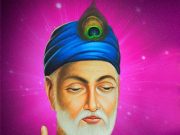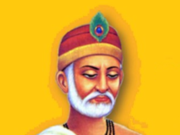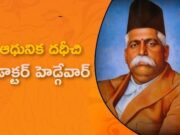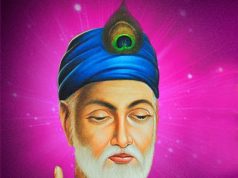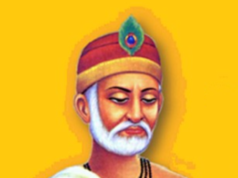Among all the tributes that poured out for J Jayalalithaa who died while holding office as the chief minister of Tamil Nadu, what President Pranab Mukherjee said was the most appropriate: She was a fighter to the end. Jayalalithaa was pushed out of the Tamil matinee idol and her own mentor M G Ramachandran’s cortege and abused by AIADMK leaders of that time. Then, she became the unchallenged leader of the same party. She was elected as the chief minister four times through many political ups and downs and received adulations of the Tamil masses and admiration of even her rivals and compatriots in other states.
Jayalalithaa displayed a rare political grit and suavity which is not very common even among hardened politicians in this country. A doting Amma to adoring millions, she redefined the ideological contours of Tamil politics and lived life on her own terms. Jayalalithaa was a product of the Dravidian movement, which identified itself with British interests in the pre-independence era and offered virulent opposition to Hindu practices in the name of social reforms and to Hindi — painted as a symbol of subjugation of South by the Aryan North.
In her public life spanning over three decades, Jayalalithaa refused to follow the ideology laid down by the founding fathers of the Dravidian movement and successfully managed to wean away Tamil Nadu from the vortex of divisive intellectual paradigm and reconnect it back to the national ethos. She single-handedly changed the rules of the game through her public conduct and life. Jayalalithaa used to perform the rahu ketu puja at Srikalahasti temple near Tirupati in Chittoor district of Andhra Pradesh.
She was also a regular visitor to the famed Tirumala temple to pray to Lord Venkateshwara Swamy and the Goddess Padmavati temple at Tiruchanur. Blind hate against the Brahmins was the signature tune of Dravidian movement which aimed at eliminating the community from the entire public space of the state. And here was Jayalalithaa, a full-blown Iyengar Brahmin, not apologetic about her origins, who defied the basic premise of the Dravidian crusade and managed to get sworn as a chief minister half a dozen times.
She knew Hindi and used the language when the occasion demanded and saw no contradiction in being a proud Tamilian, a believing Hindu and a patriotic Indian. It was because of her indomitable personality that Tamil Nadu has shun the politics of bigotry and hate and opted for an agenda of development and policies focusing on welfare. Thanks to her influence, her principal opponent DMK has also been forced to change tack. Because of the changed political atmosphere, the party no longer harps on its old divisive slogans. The birth of the Dravidian movement was deeply intertwined with the evangelisation drive of the Church and imperialistic plans of the British to divide Indians and strengthen their rule over India.
Under pressure from evangelical forces in England, a controversial clause was included in the East India Company’s Charter Act of 1813 providing for appointment of a Bishop and archdeacons in India. Subsequently the British government established an ecclesiastical department with a big budget to support the Church operations in India. The first target of the evangelisation programme in the erstwhile Madras state were Brahmins and other higher castes. But, it did not work.
In spite of spending a lot of resources, there was little success in getting them converted to an alien faith. Meanwhile, Congress, had found roots in the South. The missionaries, however, felt that Congress hindered the growth of Christianity among the Indian “intelligentsia”. The church changed its strategy, shifted the focus to non-Brahmins, particularly to the under-privileged sections of the Hindu society. The new war cry was “social justice” and the strategy was to pit the non-Brahmins against Brahmins. In 1917, the South Indian Liberal Federation Justice Party was formed by non- Brahmins. It sought to retain British rule in India and painted Congress as a Brahmindominated party that was seeking independence from the British to ensure Brahmin supremacy.
The influence of the British rulers and the Church was obvious in this exercise. Justice Party was renamed as Dravidar Kazhagam by E V Ramaswamy (an ex-Congressman who was famously called Periyar) in 1944. The party later split and one group led by C N Annadurai formed the Dravida Munnetra Kazhagam (DMK) in 1949. In October 1972, MGR, split from DMK, to form AIDMK. And the rest is history. MGR died in 1987. Jayalalithaa was not the designated successor, but she managed to win an election that crushed the AIADMK coterie under the leadership of MGR’s wife Janaki. Since then the party has remained as an extension of Jayalalithaa, with no clear successor in sight.
For nearly half a century since the Congress was ousted from Chennai, no national party has ever ruled the state, and has not even shared power with the two successful Dravidian parties. The Congress and the BJP have only been allies of either Karunanidhi, the DMK boss, or Jayalalithaa’s. How will things shape up after Jayalalithaa? One has to wait and watch. But one thing is for sure. It will not be possible to reverse the paradigm shift which Jayalalithaa had brought about in the state with her personality and leadership acumen. She did not let the Dravidian mould cast her. Instead, she cast the mould and has left behind her unique political brand.
Balbir Punj
is a former Rajya Sabha member and Delhi-based commentator on social and political issues
Email: [email protected]
Courtesy: The New Indian Express



